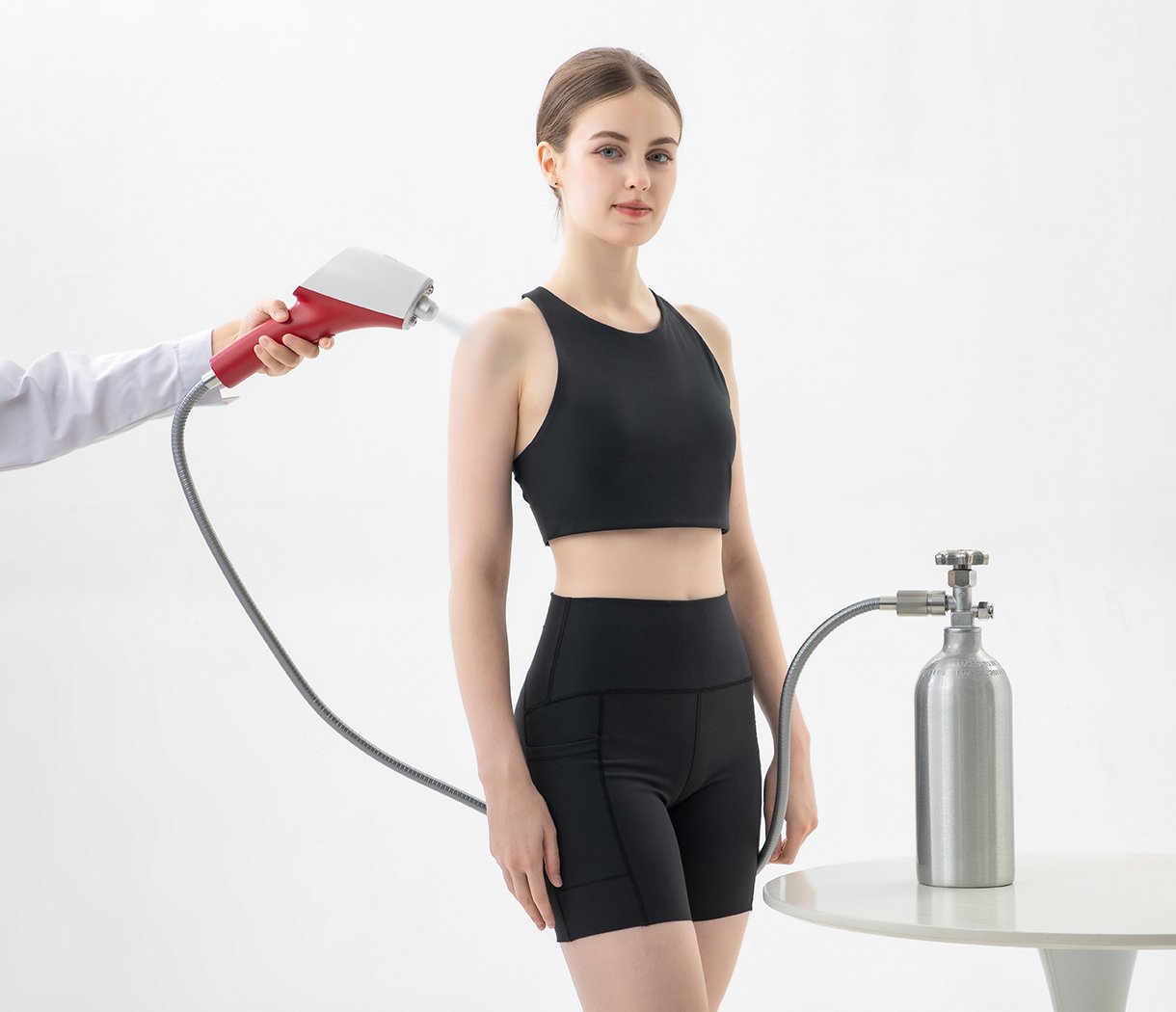Cryotherapy has emerged as a powerful tool in sports recovery, pain management, and overall wellness. Whether you’re an athlete seeking to recover faster or someone simply looking to alleviate muscle soreness, cryotherapy can deliver quick, effective results. Among the various cryotherapy options available, two gases are often the subject of discussion: CO2 (carbon dioxide) and N2 (nitrogen). Both gases offer therapeutic benefits, but which one is the right choice for you? Let’s dive into the comparison and explore the advantages of each.
What is CO2 Cryotherapy?
CO2 cryotherapy uses pressurized carbon dioxide gas, delivering a cold mist directly to targeted areas of the body. This localized treatment is growing in popularity due to its ability to deliver fast relief. CO2 therapy is perfect for those dealing with muscle soreness, joint pain, and localized injuries, allowing for a more controlled and targeted cooling experience than traditional whole-body treatments. The cold mist lowers tissue temperature to reduce inflammation and promote circulation, ultimately leading to faster recovery.
The most significant advantage of CO2 cryotherapy is its precision. It can target specific areas, making it ideal for treating localized pain and conditions such as muscle tension or joint inflammation. The treatment is often quicker than other options, providing immediate relief for sore muscles and inflamed tissues. If you’re looking for rapid recovery after a workout or dealing with minor injuries, CO2 cryotherapy might be just what you need.
The N2 Cryotherapy Advantage
N2, or nitrogen, is commonly used in both full-body and localized cryotherapy treatments. The temperature of nitrogen therapy is much colder, around -196°C, which provides deeper penetration into muscle and joint tissues. This makes N2 cryotherapy a go-to option for individuals dealing with chronic pain, deep muscle inflammation, or those needing more extensive therapeutic support.
Nitrogen’s extreme cold allows it to effectively target deeper muscle layers, promoting enhanced blood flow and tissue repair. While nitrogen is often associated with full-body treatments, it is also used locally to address specific injuries. If you’re seeking deep tissue recovery and more intensive muscle repair, N2 cryotherapy can deliver significant results. Its ability to penetrate deeper tissues makes it especially useful for conditions requiring more time to heal.
Key Differences Between CO2 and N2 Cryotherapy
Temperature Comparison: Cold but Different
The most significant difference between CO2 and N2 cryotherapy is temperature. CO2 therapy typically reaches -78.5°C, while nitrogen therapy operates at -196°C. This drastic difference means nitrogen can reach deeper layers of muscle and tissue, providing more comprehensive treatment for chronic pain or deeper injuries. CO2, on the other hand, offers a more localized, less intense cooling effect, making it ideal for surface-level treatments or acute conditions that require immediate attention.
Treatment Duration: Quick Relief vs. Longer Sessions
CO2 cryotherapy typically involves shorter treatment times. Sessions last only 10 seconds, providing fast relief for those dealing with sore muscles or joint pain. The immediate effects are often felt right after the treatment, which makes it perfect for individuals seeking on-the-spot recovery after a tough workout.
N2 cryotherapy, with its colder temperatures, requires slightly longer exposure to achieve the desired effects. While full-body sessions may last anywhere from 2 to 3 minutes, localized treatments with nitrogen tend to be longer, as the deep tissue penetration takes time to reach its full potential. If you’re seeking a longer recovery process for chronic conditions, N2 may be the better choice.
Penetration Depth: Targeted vs. Deep Tissue Impact
When it comes to tissue penetration, CO2 is ideal for targeting surface-level pain and inflammation. It effectively treats conditions such as joint pain, skin issues, or minor muscle strains by cooling the affected areas and reducing swelling.
N2’s colder temperature allows it to reach deeper into muscle tissues, making it better suited for treating chronic pain, severe muscle injuries, or conditions requiring deeper intervention. If you’re looking to address long-term pain or muscle issues deep within, nitrogen’s cold is unmatched in its ability to penetrate.
Comfort and Safety Considerations
Both CO2 and N2 cryotherapy are safe when performed properly. However, due to the extreme temperatures involved, N2 therapy requires more careful handling, and longer exposure to such intense cold may cause discomfort if not managed appropriately. In contrast, CO2 cryotherapy, with its localized and slightly less extreme temperatures, tends to be more comfortable for short sessions. For individuals looking for quick, targeted relief without prolonged exposure to the cold, CO2 is often the preferred option.
Which One is Right for You?
The choice between CO2 and N2 cryotherapy depends on your individual needs and treatment goals.
- If you’re looking for quick, targeted relief from muscle soreness, joint pain, or minor injuries, CO2 cryotherapy offers precision and faster treatment times. It’s ideal for addressing localized conditions and providing immediate relief during or after exercise.
- If you need a more intensive solution for chronic pain, deep muscle recovery, or more serious injuries, N2 cryotherapy is the better option. Its extreme cold can reach deeper tissues, making it effective for long-term healing and more significant injury recovery.
Conclusion: CO2 vs. N2 Cryotherapy – Which Packs the Bigger Punch?
Both CO2 and N2 cryotherapy offer unique advantages, depending on your goals and needs. Whether you require fast relief from surface-level pain or deep tissue recovery, there is a cryotherapy solution for you. If you’re in need of precision and speed, CO2 provides targeted relief, while N2’s intense cold offers comprehensive tissue repair for deeper conditions. Either option offers a powerful, non-invasive approach to healing and wellness.



